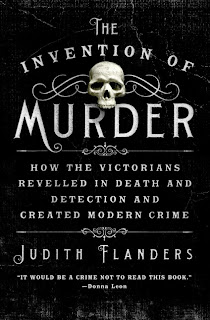Early-nineteenth-century fiction, together with its
eighteenth-century forefathers, had understood the law to encompass punishment,
not detection, and the developing professionalism of police had a negative
connotation: money corrupted justice. In Godwin’s Caleb Williams the detective’s motive is, according to de Quincy in
1845, ‘vile eavesdropping inquisitiveness. G.W.M. Reynolds, in The Mysteries of London, put it more simply
for his working class readers: a policeman ‘doubtless has several golden
reasons for not noticing anything’ in a rich man’s house, while he ‘instantly
ran after a small boy who he suspected to be a thief, because the poor wretch
wore an uncommonly shabby hat.’ In Martin
Chuzzlewit, likewise, Chevy Slyme joins the police on purpose to be ‘bought
off’.
While Inspector Bucket (Bleak
House) in 1852 had done much to dispel this attitude, it was an earlier
series of stories, begun in 1849, that was the first native-born foray into
detective fiction for the sake of detection. These pseudonymous Recollections of a Police Officer appeared
in Chamber’s Edinburgh Journal over
four years, and were presented as the memoirs of a real policeman. However, ‘Charles
Martel’s’ The Detective’s Notebook,
similarly presented as a memoir in 1860, is a mix: some episodes are
old-fashioned chase stories, but others start to develop the idea of detection
as a skill.
The main way of telling fictional memoirs from real ones is
to look at the crimes. A real detective, James McLevy, who joined the force in
Scotland in 1833, claimed to have worked on more than 2,220 cases by the time
he produced two volumes of reminiscences, Curiosities
of Crime and The Sliding Scale of
Life, both in 1861. The cases he described included the theft of hens and tobacco,
a mugging, a pick-pocketing. All except two, one a concealment of birth, the
other a murder, were property crimes, and the sentences ranged between sixty
days (for the theft of some ducks), nine months (the concealment of birth) and
fourteen year’ transportation (the murder, reduced to culpable homicide). The
volumes were reprinted a few times, but had no great success. How different
were the stories of James McGovan, whose Brought
to Bay was published in 1878 and sold 25,000 copies. McGovan claims that
McLevy was his ‘old friend’, and presents his work as reminiscences too, but
here the stolen ducks are superseded by vast jewel thefts, a murder disguised
as a suicide, a counterfeiting ring run from ‘Fegan’s’. These are romances, tales of plucky young
lads, broken-hearted mothers, noble sisters. Here there is no place for a crime
such as McLevy reported, a man who stole 4 ½ d. from an old woman –every penny
she had in the world. McLevy’s world is the real world, a world where Helen
Blackwood, a Glasgow prostitute, shared a room measuring eight feet by six feet
with her lover, two other prostitutes who stayed there intermittently and two
homeless boys, aged nine and eleven, who she let sleep under her bed. This was
reality. . .
In 1888 Whitechapel serial killer was real yet everything we
know about Jack the Ripper – his name, his persona, his reasons for killing -
is a culmination of a century of murderous entertainment, of melodrama, of
puppet shows, of penny-dreadfuls and more. The excitements, the fears and the
sense that murder was a spectacle were all focused by the killings, and projected
onto the blank screen of unknowingness created by the lack of a solution to the
crime. The Whitechapel murderer operated for ten weeks; “Jack the Ripper’ was
the product of the entire previous century. And this mythical figure, in turn, opened
the door to a new century of killing, a vastly less entertaining, and more
frightening, proposition.
Murder had developed, as de Quincy had prophesied. An
apparatus had developed around murder, a scaffolding: there was a police force
now; there were detectives. There were stage shows featuring detectives, there
were waxworks, puppet shows, songs, sketches; there were, most importantly of
all, detective stories and novels. Crime fiction took this new scaffolding, and
covered it with an attractive surface. Now it had a shape, and a raison d’etre. The detective stands with
his back to the fire: ‘You may be wondering why I have summoned you all together,’
he pronounces. No one wondered any more. Detection – in fiction, at any rate –
made the world safe. The sleuth hound would track down the murderers and bring
them to justice; no longer would people have to look over their shoulders in
fear. The cunning of the criminal was matched on stage, on the page, by the
wisdom of the hunter.
Repeated over and over, this archetype became, in people’s
minds, reality. Most people in Britain had never had to worry about murder: by
the nineteenth century it was vanishingly rare, by the start of the twentieth
century, therefore, love of blood could be indulged in safety and security,
without any far of ugly reality bursting in. Instead, oceans of blood
could be cheerfully poured across the stage, across the page, in song and sermon.
Murder was, finally, a fine art.


“People are beginning to see that something more goes to the composition of a fine murder than two blockheads, a knife, a purse and a dark lane. Mr. Williams has exalted the ideal of murder to us all. . . he has carried his art to the point of colossal sublimity.” –Thomas de Quincy
ReplyDelete